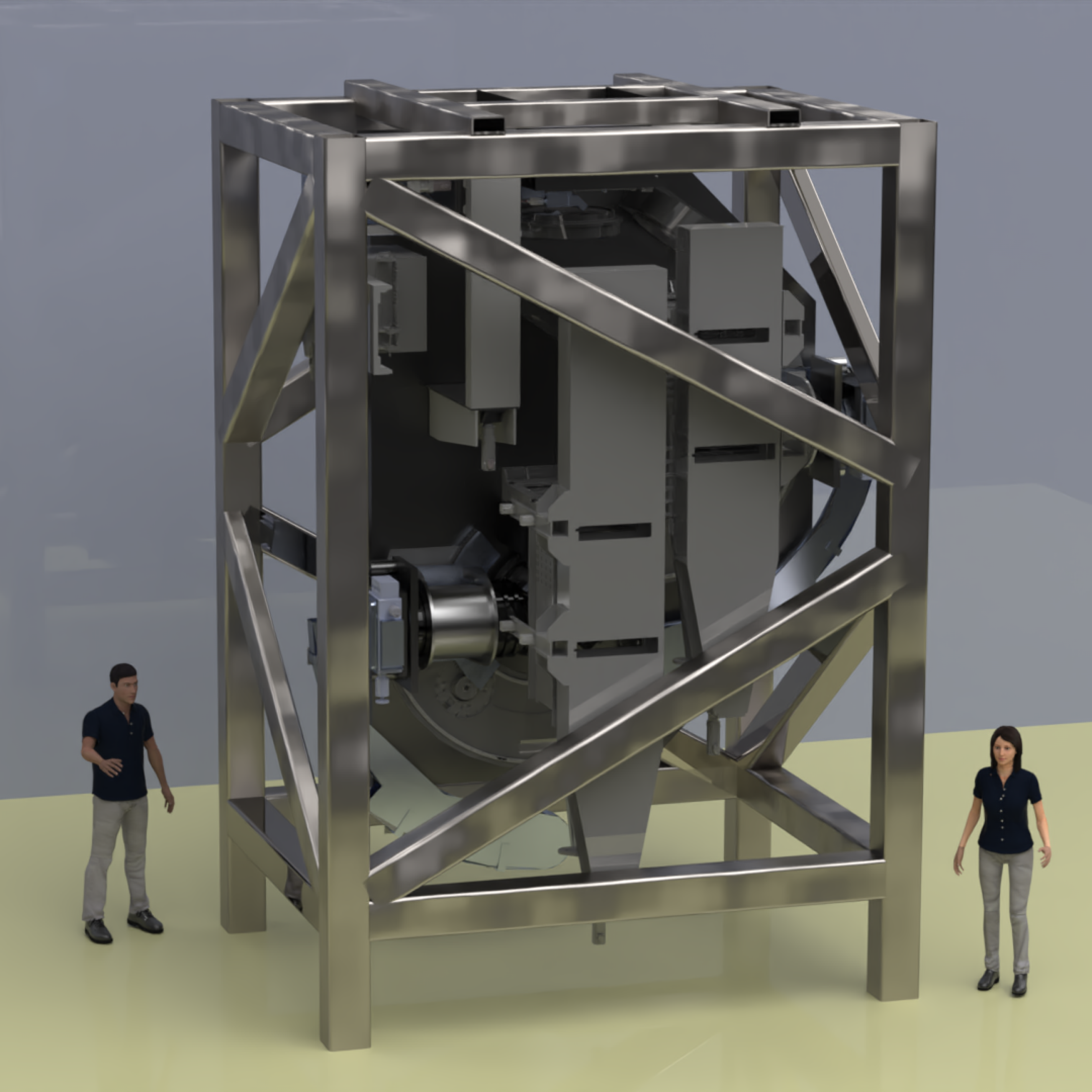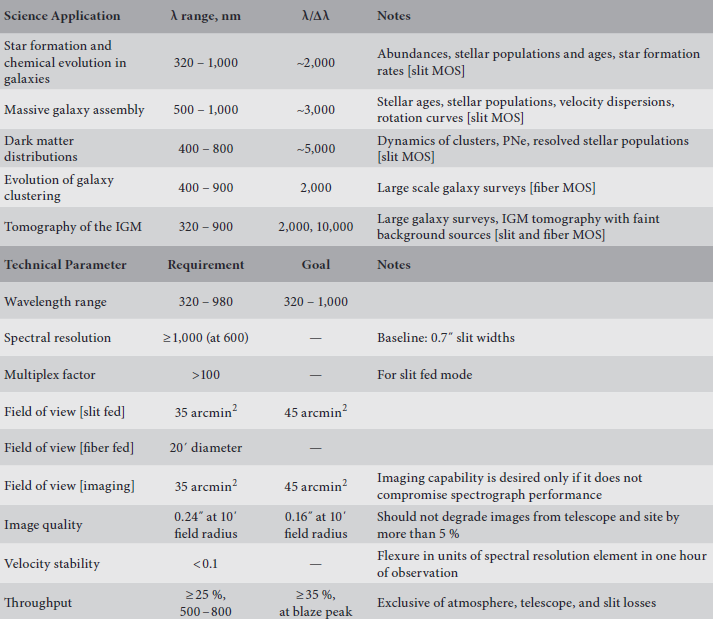
GMACS
The GMT Multi-object Astronomical and Cosmological Spectrograph - GMACS is a visible, moderate-dispersion, multi-object spectrograph with red and blue channels. It is designed to operate in natural seeing, but its sensitivity will be enhanced with GLAO correction. GMACS’s field of view is 7.5 arcmin in diameter for operation with multislit masks. When fed with MANIFEST’s optical fibers, objects can be observed across the GMT’s full 20 arcminute field of view. MANIFEST can provide higher multiplex advantage, higher spatial and spectral resolutions using fiber-slicers, multi-fiber integral field unit (IFU) bundles, or a combination of these modes. GMACS uses VPH gratings on both the blue and red sides to achieve high throughput. GMACS’s scientific and technical requirements are summarized in the Table below. GMACS’s wavelength coverage will extend from the blue atmospheric cut-off at 0.32 μm to the red limit of silicon detectors at 1 μm. GMACS is planned to be the GMT’s second science instrument.
Science with GMACS
Key science drivers include:
● Time domain astrophysics including gamma ray bursts (GRBs), gravitational wave counterparts, supernovae (SNe), and exoplanet transits
● Atmospheres of brown dwarfs and exoplanets
● Dynamics of dwarf and ultra-faint dwarf galaxies
● Redshift surveys
● Formation and assembly of galaxies
● Intergalactic medium (IGM) and circumgalactic medium (CGM) tomography of distant galaxies
Scientific and technical requirements for GMACS:

GMTBrO participation in GMACS
GMACS is a visible, mid-resolution optical spectrograph. Its main scientific goals are the spectroscopic studies of primordial galaxies and other high-redshift targets - currently known only from imaging observations. GMACS will stand at the DG (Direct Gregorian) platform of GMT, what implies that mechanical flexures should be compensated as accurately as possible.
GMACS Conceptual Design (CoD) phase started in March 2017 with a kick-off meeting. A CoD midpoint review was help on July 2018, with a review committee composed exclusively of GMTO members. The major design drivers for GMACS were high throughput, simultaneous wide wavelength coverage, accurate and precise sky subtraction, moderate resolution, relatively wide field, and substantial multiplexing.
The Conceptual Design Review (CoDR) for the GMACS was held at the Munnerlyn Astronomical Laboratory in Texas A&M University's Main Campus on 04-05 September 2019. The committee was composed by: Daniel Fabricant (CfA; chair); Gary Hill (UT Austin); Matthew Radovan (UC Santa Cruz); and Stephen Smee (Johns Hopkins University).
The GMACS CoDR was considered approved, however the review committee raising some points of concern that shall be addressed prior, or in the beginning of the next phase. GMTBrO is actively involved in Optical Design, Systems Engineering, and Mechanical Engineering for GMACS.
The Optical Design was well received by members of the review committee due to the simplicity of the concept system adopted, meeting all the requirements of image quality performance and low-risk of manufacturing and assembly.
The GMACS systems engineering consists of multiple processes for the instrument development which are described in GMTO SEMP (Systems Engineering Management Plan). These processes consist of and are not limited to i) Requirements Management; ii) Operational Concepts Description; iii) Interface Control; iv) Risk Management; v) Assembly, Integration and Testing plan; vi) Project Management support (PBS and WBS definitions, trade-off analysis, etc).
The GMACS mechanical engineering consists of design structures and mechanisms able to support and positioning optics elements according to the system requirements. It also includes material selection and specification of sensors and actuators for moveable optical and mechanical parts.
There is a desire to continue the GMTBrO partnership for the GMACS next Preliminary Design (PD) development phase. GMTBrO is ready to work on different fronts in the development of GMACS: i) optical design; ii) metrology system; iii) mechanical engineering; and iv) systems engineering.
The start of PD phase will depend on the GMTO schedule and resources availability, and should occur by mid-2020.
GMTBrO 2025